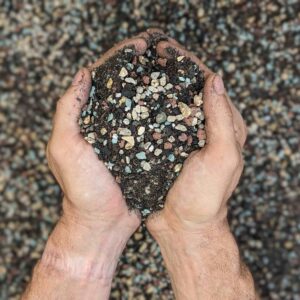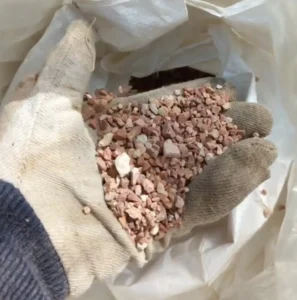Yes, absolutely.
Cacti are known for their ability to thrive in arid climates, and as a result, many people believe the unfortunate myth that you should never water a cactus. And whilst most cacti can survive extended periods without water, this does not mean that cacti don’t require any moisture. Make no mistake: if you completely starve your cactus of water, it will die a slow and agonizing death.
To avoid that unfortunate and cruel fate, it’s important to understand that cacti are a diverse family of plants, and their water needs vary dramatically. The first step should always be to identify the specific species of cactus you own and adjust your watering schedule to their needs.
For example, Copiapoa cinerea occurs naturally in the Atacama desert, which averages only 15mm of rainfall a year. On the other hand, Rhipsalis baccifera grows in trees deep in the Central American rainforests, which average 2,000-10,000mm of rain per year. If you watered the Copiapoa as much as the Rhipsalis it would turn to mush in a matter of days, and likewise, if you watered the Rhipsalis at the same rate as the Copiapoa it would quickly turn to a crisp.
By researching the cactus you own, the rainfall in its natural habitat, and what time of year it typically receives that rain,, you can create a watering schedule that works for you.
Infrequent deep watering vs frequent light watering
When people hear that cacti don’t need much water, they sometimes interpret that as cacti needing just a little spritz of water every day when they actually need to be completely soaked, albeit infrequently.
The tropical Rhipsalis baccifera was a fairly extreme example to make a point, but most of the time, when people talk about cacti, they are referring to the spikey, drought-tolerant desert-dwelling variety. The notable thing about the rainfall patterns in most of these cacti’s natural habitats is that the winters are arid, followed by summer monsoons and flash flooding. As a result, many cacti have evolved to survive in a feast-and-famine water cycle.
Frequent light watering can encourage rot around the base of the plant and shallow root growth. Infrequent, deep watering (watering until it pours out the bottom of the pot) promotes deep, solid, and healthy roots.
“Just tell me how often I should water my cactus!”
The best and easiest rule of thumb to follow when watering cacti is to wait until the soil is completely dry. Simply stick your finger deep down into the soil, and if you feel moisture, hold off for a while longer.
This is an excellent rule of thumb (pun intended) because it will help you identify another common cactus cultivation problem: adequate drainage. If your soil never fully dries out, it is quite likely that your mix is too organic and doesn’t contain enough mineral-based drainage material such as pumice, perlite, or zeolite.
In winter, you want to water less, and in summer, you want to water more frequently, but this easy rule of thumb should help you navigate that, with hotter weather naturally speeding up the evaporation process in the soil.
Can I use tap water?
With some minor additions, tap water is probably the most accessible and convenient option for most growers. We wrote more about this topic in A Guide to Watering Cactus.
In summary
-
Yes, cacti need water.
-
Do a little research on the amount of rain in the natural habitat of the cactus you are growing.
-
Wait until the soil is almost dry between waterings. This also means you’ll water less in winter and more in summer.
-
Deeply soak the cactus when you do water.
-
Freshly collected rainwater or de-chlorinated tap water is the best option for your prized plants; read more about that here.



